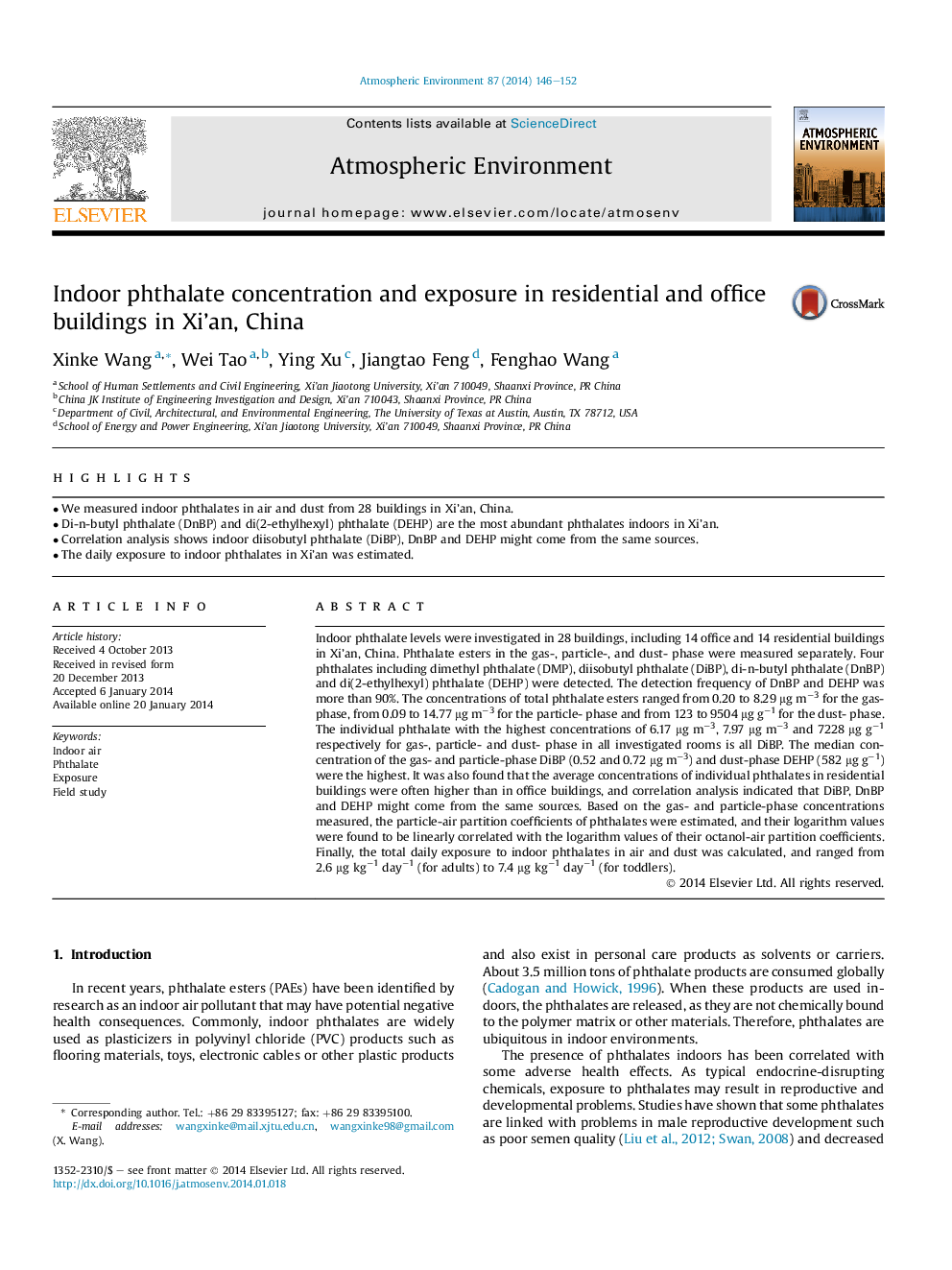| Article ID | Journal | Published Year | Pages | File Type |
|---|---|---|---|---|
| 6340355 | Atmospheric Environment | 2014 | 7 Pages |
Abstract
Indoor phthalate levels were investigated in 28 buildings, including 14 office and 14 residential buildings in Xi'an, China. Phthalate esters in the gas-, particle-, and dust- phase were measured separately. Four phthalates including dimethyl phthalate (DMP), diisobutyl phthalate (DiBP), di-n-butyl phthalate (DnBP) and di(2-ethylhexyl) phthalate (DEHP) were detected. The detection frequency of DnBP and DEHP was more than 90%. The concentrations of total phthalate esters ranged from 0.20 to 8.29 μg mâ3 for the gas- phase, from 0.09 to 14.77 μg mâ3 for the particle- phase and from 123 to 9504 μg gâ1 for the dust- phase. The individual phthalate with the highest concentrations of 6.17 μg mâ3, 7.97 μg mâ3 and 7228 μg gâ1 respectively for gas-, particle- and dust- phase in all investigated rooms is all DiBP. The median concentration of the gas- and particle-phase DiBP (0.52 and 0.72 μg mâ3) and dust-phase DEHP (582 μg gâ1) were the highest. It was also found that the average concentrations of individual phthalates in residential buildings were often higher than in office buildings, and correlation analysis indicated that DiBP, DnBP and DEHP might come from the same sources. Based on the gas- and particle-phase concentrations measured, the particle-air partition coefficients of phthalates were estimated, and their logarithm values were found to be linearly correlated with the logarithm values of their octanol-air partition coefficients. Finally, the total daily exposure to indoor phthalates in air and dust was calculated, and ranged from 2.6 μg kgâ1 dayâ1 (for adults) to 7.4 μg kgâ1 dayâ1 (for toddlers).
Related Topics
Physical Sciences and Engineering
Earth and Planetary Sciences
Atmospheric Science
Authors
Xinke Wang, Wei Tao, Ying Xu, Jiangtao Feng, Fenghao Wang,
